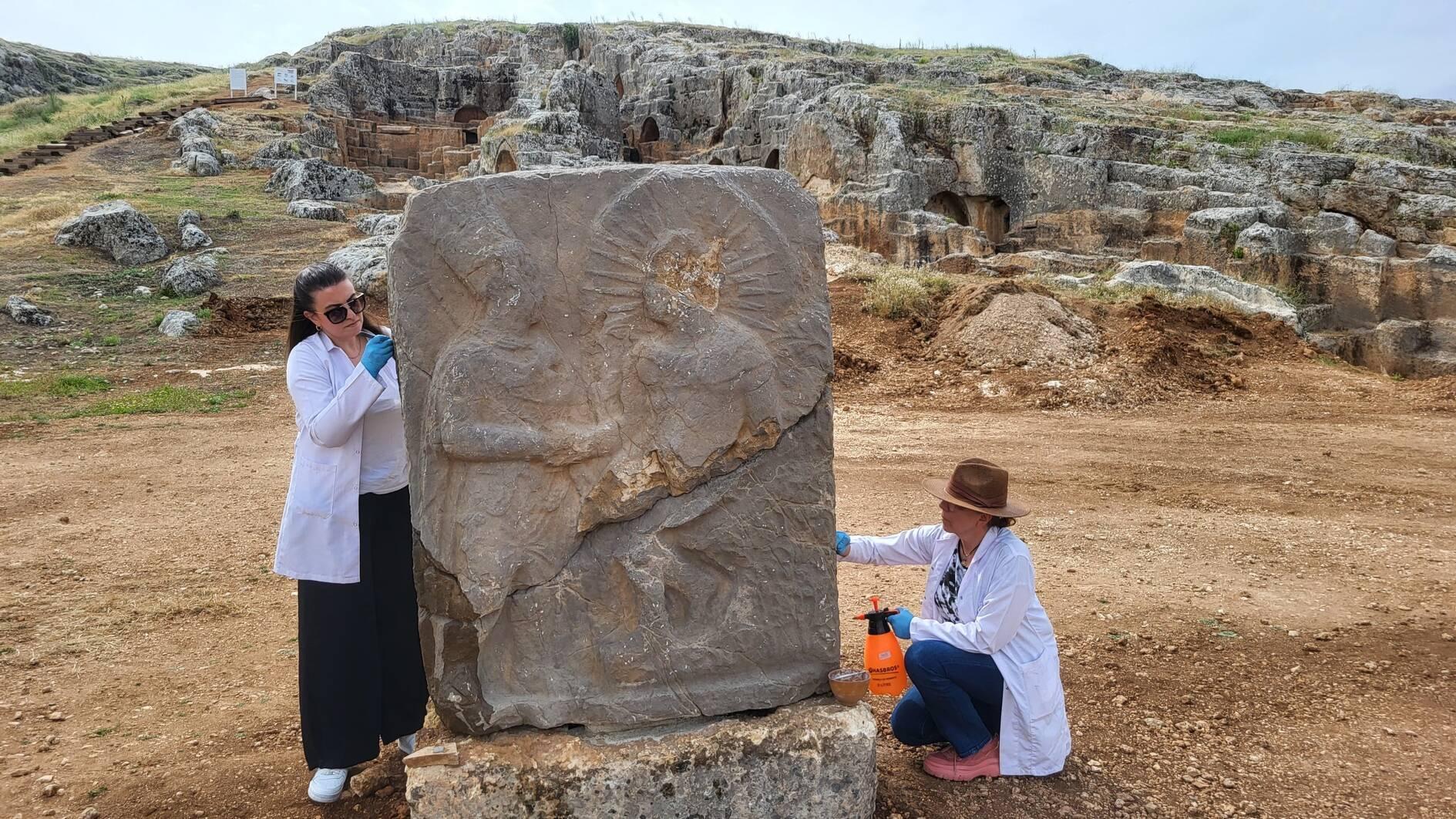
The 2,100-year-old steles, transported by military helicopter from Mount Kımıl in the eastern province of Adıyaman, will be brought to tourism in the ancient city of Perre after restoration and conservation works.
A cult (sacred) area similar to the one in the city’s Mount Nemrut was found on Kımıl Mountain in the Gerger district of Adıyaman, and two stelae, one of which was divided into two, were found on its foothills.
The 3.5-ton stele was divided into two and depicted a handshake exchange between Apollo Mithras and King Antiochus, and the other 2.2-ton stele had inscriptions on both sides. These stales were brought to the ancient city of Perre in September 2023.
Margherita Facella from the University of Pisa and Charles Crowther from Oxford University, who received permission from Türkiye’s Culture and Tourism Mİnistry, studied the inscriptions on the stelae. It is known that the inscriptions contain the laws and will of King Antichos.
Gaziantep Restoration and Conservation Regional Laboratory Manager Ayşe Ebru Çorbacı and her team restored the divided stele by inserting pins and using special adhesives. An aesthetic filling was also used to prevent rainwater from entering the stele and to make it visible.
After four days of work, the stelae were placed on pedestals in the northeast of the ancient city of Perre necropolis area and will be opened to visitors during Museums Week.
Providing information about the moving process of the steles, Adıyaman Museum Director Mehmet Alkan said, “On Oct. 10, 2021, we detected these two stelae in the Kımıl Mountain area. We suggested to the Şanlıurfa Cultural Heritage Preservation Regional Board that the cult area, where the steles were located, be registered as a protected area, and it was registered. Later, on Sept. 26, 2023, we took these artifacts from Gerger with a military helicopter and moved them to Adıyaman. After the first stage of the restoration and conservation work, we put them on pedestals in Perre to display for tourists.”